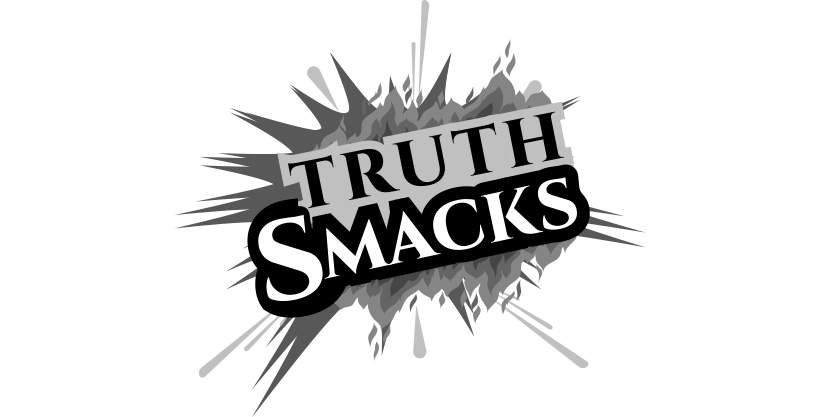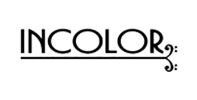Embracing User-Centered Design
In a rapidly evolving technological landscape, where the demand for innovative products and services is incessant, user-centered design (UCD) has emerged as a foundational philosophy for creating solutions that resonate with and cater to the needs and preferences of the end-users. Over the past few decades, UCD has evolved into a key approach in the fields of product design, web and app development, architecture, and more. This comprehensive guide will delve into the intricacies of embracing user-centered design, exploring its principles, processes, and the far-reaching impact it can have on businesses, organizations, and the end-users themselves.
What is User-Centered Design?
User-Centered Design, often abbreviated as UCD, is an approach to design that prioritizes the end-user throughout the entire product development cycle. It is a human-centric process that aims to create products, services, and experiences that genuinely address the needs, preferences, and behaviors of the people who will use them. User-Centered Design operates on the fundamental principle that design decisions should be based on a deep understanding of the users’ requirements and their context of use.
The overarching goal of User-Centered Design is to enhance the usability, accessibility, and overall user satisfaction with a product or service. It can encompass a wide range of design disciplines, including graphic design, interaction design, industrial design, architecture, and more. UCD can be applied to a variety of contexts, from physical products to digital interfaces, and from public spaces to private homes.
The Principles of User-Centered Design
User-Centered Design is built on a set of core principles that guide the entire design process. These principles serve as a foundation for creating user-centric solutions. Here are the key principles of UCD:
- User Involvement: The active involvement of users throughout the design process is essential. This can include activities like user research, usability testing, and feedback collection.
- User Understanding: Designers must strive to gain a deep understanding of their users, their needs, goals, and pain points. User personas are often created to represent different user groups and their characteristics.
- Iterative Design: UCD is an iterative process. Designers create prototypes and gather feedback from users. This feedback informs subsequent design iterations, leading to an improved final product.
- Early and Continuous Testing: Usability testing is conducted early in the design process, and this continues through multiple iterations. This helps in identifying and addressing problems as they arise.
- Accessibility and Inclusivity: UCD emphasizes creating products and services that are accessible to all, regardless of their abilities or disabilities. This includes considerations for factors like color contrast, keyboard navigation, and screen reader compatibility.
- Consistency and Visual Design: Maintaining a consistent and cohesive visual design, including the use of colors, typography, and user interface elements, is crucial for a seamless user experience.
- Collaboration: UCD fosters collaboration among cross-functional teams, including designers, developers, marketers, and stakeholders. This collaboration ensures that everyone is aligned with the user-centered approach.
- Empathy: Designers are encouraged to develop empathy for users, understanding their perspectives, challenges, and motivations. This deep understanding leads to designs that resonate with and serve the users effectively.
- User-Centered Culture: Organizations should cultivate a culture that values and prioritizes user-centered design. This means ensuring that all team members understand and embrace the importance of focusing on user needs.
The User-Centered Design Process
User-Centered Design is not a one-size-fits-all process but a flexible approach that can be adapted to different projects and contexts. However, it generally follows a series of stages, each with its own specific activities and objectives. These stages provide a structured framework for the UCD process:
- User Research:
- The process begins with in-depth user research. This involves techniques such as surveys, interviews, observations, and data analysis to understand the target audience.
- User personas are created to represent different user groups and their characteristics, needs, and goals.
- Defining Objectives:
- Clear objectives and goals are defined for the project. What problem are you trying to solve, and how will the solution benefit the users?
- This stage helps in setting a clear direction for the design process.
- Ideation and Conceptualization:
- Brainstorming and idea generation take place to explore potential design solutions.
- Creativity is encouraged, and a wide range of design concepts may be considered.
- Prototyping:
- Low-fidelity prototypes are created to visualize and test design concepts. These prototypes can be paper sketches, wireframes, or interactive mock-ups.
- Gathering user feedback is a key part of this stage to make necessary refinements.
- Iterative Design:
- The design process continues in an iterative manner. Feedback from users and testing results inform ongoing refinements to the design.
- Multiple design cycles may be conducted to reach an optimal solution.
- Usability Testing:
- Usability testing involves real users evaluating the effectiveness and user-friendliness of the product or service.
- Pain points and areas for improvement are identified and addressed.
- Accessibility Considerations:
- Ensure that the design is inclusive and accessible to people with various abilities and needs.
- Consider factors such as color contrast, keyboard navigation, and screen reader compatibility.
- Consistency and Visual Design:
- Maintain a consistent and cohesive visual design, including the use of colors, typography, and user interface elements.
- Aesthetic considerations are important for creating an appealing user experience.
- User Feedback and Continuous Improvement:
- Encourage ongoing feedback from users, and make continuous improvements to the product based on their needs and suggestions.
- This stage is crucial for keeping the design up-to-date and relevant.
- Collaboration:
- Foster collaboration among cross-functional teams, ensuring that designers, developers, marketers, and stakeholders are aligned with the user-centered approach.
- Effective communication and teamwork are key to a successful UCD process.
- Empathy:
- Develop empathy for users to truly understand their perspectives, challenges, and motivations. This deep understanding is the bedrock of effective UCD.
- User-Centered Culture:
- Create a culture within your organization that values and prioritizes user-centered design as a core principle.
- Ensure that everyone understands the importance of putting user needs at the forefront of design efforts.
The Impact of User-Centered Design
Embracing User-Centered Design can have a profound impact on various aspects of a project or organization. Here are some of the key benefits and impacts of UCD:
- Improved User Satisfaction: By designing products and services that align with user needs and preferences, UCD leads to higher user satisfaction and loyalty.
- Reduced Development Costs: Identifying and addressing usability issues early in the design process can significantly reduce the cost of fixing problems later in development or after product release.
- Faster Time to Market: Iterative design and user feedback help streamline the development process, reducing the time it takes to bring a product to market.
- Competitive Advantage: Organizations that prioritize UCD can gain a competitive edge by delivering superior user experiences that stand out in the market.
- Higher Conversion Rates: UCD can lead to increased conversion rates in e-commerce and other digital environments, ultimately driving business growth.
- Reduced Support and Maintenance Costs: Products and services designed with the user in mind tend to require less ongoing support and maintenance.
- Innovation: UCD encourages creative problem-solving and innovation by considering user needs and exploring novel design solutions.
- Inclusivity: UCD promotes accessibility and inclusivity, ensuring that a wider range of users can benefit from a product or service.
- User Loyalty: When users feel that their needs are understood and met, they are more likely to become loyal customers and advocates for the product or brand.
- Business Success: Ultimately, UCD can contribute to the overall success of a business or organization by delivering solutions that resonate with the target audience.
Case Studies in User-Centered Design
To illustrate the real-world impact of User-Centered Design, let’s explore a few case studies:
- Apple Inc.:
- Apple is renowned for its user-centered approach. Products like the iPhone and MacBook are the result of extensive user research and a commitment to delivering a seamless user experience.
- Airbnb:
- Airbnb transformed the hospitality industry by designing a platform that focuses on user needs and preferences, offering personalized travel experiences.
- Ford:
- Ford has embraced UCD to create user-friendly interfaces in their vehicles. Features like the Ford SYNC system are the result of careful consideration of driver needs and safety.
- Amazon:
- Amazon continuously uses UCD to improve its e-commerce platform, enhancing the shopping experience and increasing customer satisfaction.
These case studies demonstrate that UCD is not limited to a specific industry but is applicable across various sectors, from technology to hospitality, automotive to e-commerce.
Challenges in User-Centered Design
While User-Centered Design offers numerous benefits, it’s not without its challenges. Some of the common challenges include:
- Budget and Time Constraints: Conducting user research and iterative design can be time-consuming and costly. Organizations may need to balance the benefits of UCD against budget and time constraints.
- Resistance to Change: Implementing a UCD approach may face resistance within organizations that have traditionally operated differently. It requires a cultural shift toward prioritizing user needs.
- Balancing User Feedback: Sometimes, user feedback can be conflicting, making it challenging to make design decisions. Designers must find a balance between different user perspectives.
- Lack of Access to Users: In some cases, it may be challenging to access the actual users of a product, especially in highly specialized or regulated industries.
- Overemphasis on Consensus: Seeking consensus among team members and stakeholders can lead to design decisions that satisfy everyone but fail to meet the needs of the target users.
- Complexity: Designing for diverse user groups with varying needs can be complex. Designers need to find the right balance to meet the needs of as many users as possible.
- Evolving Technologies: Designing for rapidly evolving technologies, such as mobile devices and emerging interfaces, can be a challenge. Staying up-to-date is essential.
Overcoming these challenges requires a commitment to the principles of User-Centered Design, effective communication, and a willingness to adapt to changing circumstances.
The Future of User-Centered Design
As technology continues to advance, and as the importance of delivering user-friendly experiences becomes even more critical, User-Centered Design is likely to play an increasingly pivotal role. Here are some key trends and considerations for the future of User-Centered Design:
- Artificial Intelligence and Machine Learning: AI and machine learning can enhance User-Centered Design by personalizing user experiences and automating tasks to better cater to individual needs.
- Voice and Conversational Interfaces: With the rise of voice assistants and chatbots, designing natural and intuitive conversational interfaces will be a central focus of User-Centered Design.
- Virtual and Augmented Reality: User-Centered Design will extend into the realm of VR and AR, where the design of immersive experiences will rely heavily on understanding user behavior and preferences.
- Ethical Design: There is an increasing focus on the ethical implications of design choices. User-Centered Design will need to incorporate ethical considerations, such as data privacy and inclusivity.
- Global and Cross-Cultural Design: As products and services reach global audiences, User-Centered Design will need to address cross-cultural differences and user needs in various regions.
- Accessibility and Inclusivity: User-Centered Design will continue to prioritize accessibility and inclusivity, ensuring that products and services are designed for people of all abilities.
- Data-Driven Decision-Making: User-Centered Design will increasingly leverage data and analytics to make informed design decisions and continually improve user experiences.
- Sustainability: Designers will focus on creating products and solutions that are sustainable and environmentally friendly, aligning with user concerns about the environment.
In conclusion, User-Centered Design is a dynamic and adaptable approach that places users at the forefront of the design process. It empowers designers and organizations to create products and services that not only meet user needs but also lead to business success. User-Centered Design is a philosophy that celebrates empathy, collaboration, and iterative design. As technology evolves and user expectations grow, the importance of User-Centered Design in shaping the future of design and innovation cannot be overstated. Whether it’s creating the next groundbreaking app, a life-changing medical device, or a user-friendly website, embracing User-Centered Design will continue to be a cornerstone of success in design and business.












